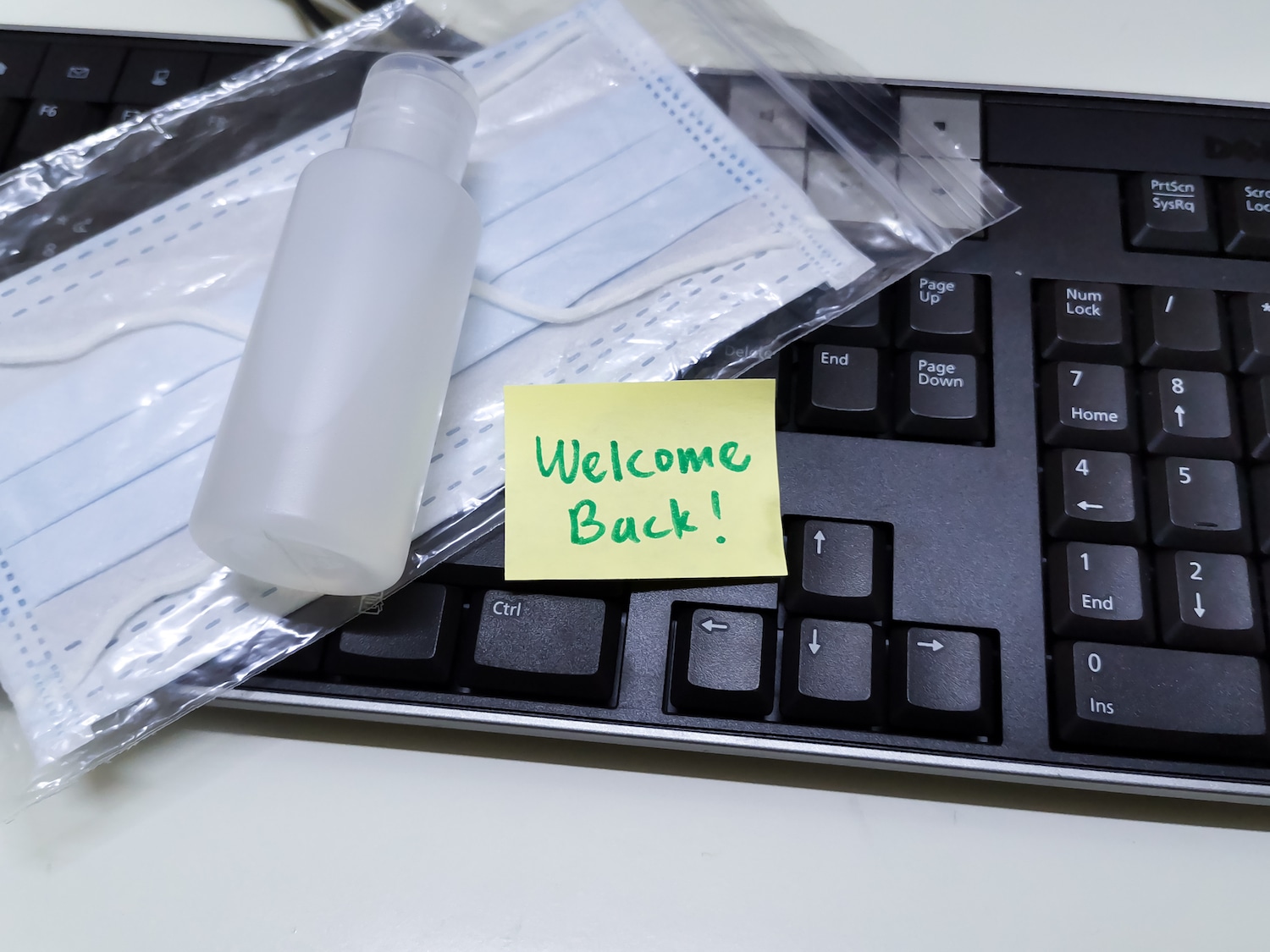To return to the workplace or not? For people with cancer, this decision involves ever-changing COVID-19 news and uncertainties about how the virus may affect their health.
“Some of the anxiety I’m feeling [about returning to the office] is coming from the lack of control I feel,” says Jasan Zimmerman, 44, of Palo Alto, California. He’s had neuroblastoma, thyroid cancer and a thyroid cancer recurrence. Even though he’s in remission, Zimmerman is concerned his cancer history might put him at elevated risk from COVID-19. “It takes me back to my cancer bouts. … The pandemic feels very similar to that lack of control, like a flashback to a bad time in my life,” he says.
For More Information
Read more coverage here from Cancer Today on the various impacts of the coronavirus on people with cancer.
Some research has shown that people with a cancer history can have a greater risk of serious illness with COVID-19, compared to people without a cancer history, possibly due to weakened immune systems. When these patients—as well as their caregivers—get called back to their places of work, it can present a tough decision, loaded with financial and health implications.
Zimmerman also has asthma and bronchiectasis—unrelated to his cancer history—which may increase his risk of serious illness with COVID-19, according to his doctors. He works as a fundraiser for a children’s hospital, and his department has worked from home since mid-March. His office plans to reopen in late August, but he can’t imagine returning until a vaccine or effective treatment is available. Zimmerman’s human resource manager has been receptive to his concerns and is creating guidelines to offer alternate arrangements for employees who need them.
“This is a much bigger issue than just for high-risk people. It’s also about those who live with a high-risk person—a spouse or a kid or a parent,” Zimmerman says. “Things are changing so quickly [with COVID-19] … the research and fatality rates and all that stuff, and I’m trying to keep up with that. But for me, I’m so scared of being around other people besides my wife.”
Does this decision force people to choose between their money and their health? Not necessarily, says Joanna Morales, chief executive officer of the national nonprofit Triage Cancer. Her organization provides education on legal issues relevant to the lives of cancer survivors and caregivers. Morales wants people to know that they may have more options than they realize when making decisions about their return to work.
“We often talk about employment rights as a puzzle. And all of these types of laws and benefits are different puzzle pieces, and everyone’s puzzle is going to look different based on what they have access to,” Morales says.
Morales encourages people to look into reasonable accommodations under the Americans with Disabilities Act as a first option, which may allow an employee to maintain work-from-home arrangements if it does not cause undue hardship to the employer. If an employee does return to the workplace, they may request accommodations such as one-way aisles, plexiglass dividers, or a temporary job transfer to decrease their exposure risk. Other puzzle pieces include paid time off, including sick leave and vacation time, unpaid leave and disability benefits.
Individual circumstance and location will determine which options are available. Employers often create case-by-case solutions, and many unemployment laws are state-based. Michigan, for example, issued executive orders to extend state unemployment benefits to people with compromised immune systems who get laid off or don’t have access to paid medical or family leave. Other guidance and rules are federal, issued by the Occupational Safety and Health Administration (OSHA) and the Department of Labor. Some benefits stem from recent legislation, including the Families First Coronavirus Response Act, which extends sick leave or family leave to workers at some qualifying businesses who are sick with COVID-19 symptoms, quarantined or asked to stay home on the advice of a health care provider, or caring for family members. Adding to the complexity, some laws and orders change and expire.
To understand available options, Morales suggests that people with concerns do some research before they make a decision with their employer. If someone quits a job before seeking alternate accommodations or accessing leave programs, they may forfeit unemployment benefits.
Some workers have fewer options than others, however. Many employees, including those who deliver mail or work in grocery stores, health care facilities, factories, packing plants or gas stations, don’t have options to telecommute. Employers have a responsibility to adhere to safety guidance from OSHA, in addition to state and local rules, although some essential workers have reported inaction from OSHA after speaking out against violations.
“[Health disparities] were a reality in cancer before COVID happened … and a pandemic only exacerbates that,” says Rebecca Nellis, executive director of Cancer and Careers, a New York City-based nonprofit organization that advises people with cancer on workplace issues. “It is highlighting things that aren’t shocking, like: Who has access to insurance? What happens when you lose your job, and what does that mean for your insurance?”
No matter the job, Nellis echoes Morales’ statement that finding a source of updated, trustworthy information is vital to protect health and finances. Triage Cancer offers information on protections and benefits for people with cancer who’ve been called back to work. Cancer and Careers has a section devoted to COVID-19 workplace resources, including webinars, blogs and grant information.
“This is a lot of information to navigate and it seems like an additional burden,” Morales says. “But it’s incredibly important for people to really get an understanding of what their options are so they don’t regret the decisions that they made or realize that they missed out on some opportunities.”
Cancer Today magazine is free to cancer patients, survivors and caregivers who live in the U.S. Subscribe here to receive four issues per year.





